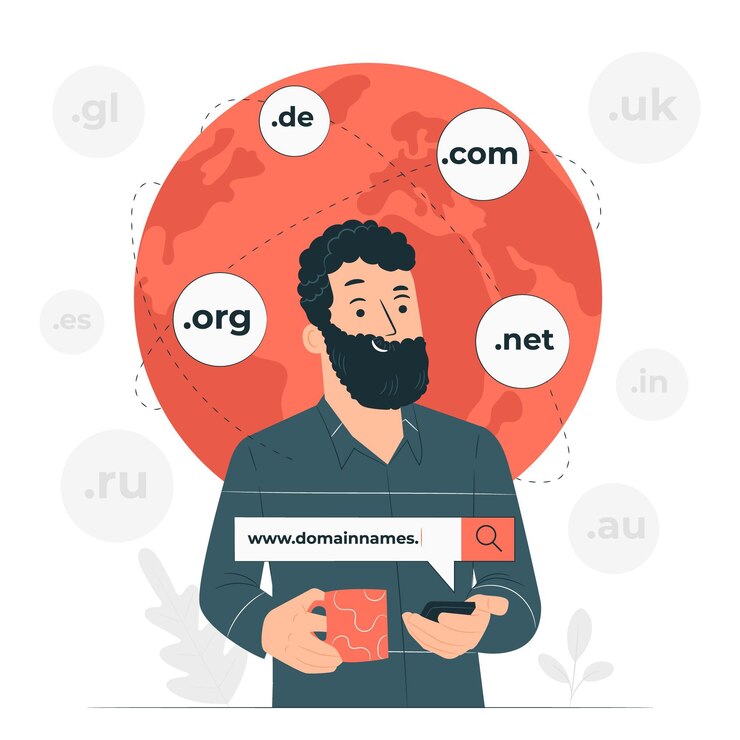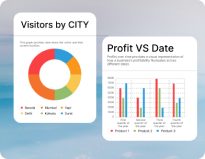1. Introduction
Importance of E-Commerce Websites
To create E-commerce websites serve as the digital storefronts of the modern era, providing businesses with the opportunity to reach a global audience, increase sales, and enhance brand visibility. Understanding the significance of a well-executed e-commerce project is the first step toward online success.
Planning Your E-Commerce Project
Before diving into the technical aspects, careful planning is essential. Identify your target audience, set clear goals, and outline the products or services you intend to offer. This groundwork will shape the entire trajectory of your e-commerce journey.
2. Setting the Foundation

Choosing the Right Platform

Selecting the appropriate e-commerce platform is a pivotal decision. Consider factors such as scalability, ease of use, and available features. Popular options like Shopify, WooCommerce, and Magento offer unique advantages catering to different business needs.
Domain Name Selection

Your domain name is your digital identity. Choose a name that reflects your brand and is easy to remember. Ensure it aligns with your business niche and is search engine-friendly.
Hosting Considerations
Reliable hosting is the backbone of a successful e-commerce website. Opt for a hosting provider that offers security, speed, and scalability to accommodate the growth of your online store.
3.Designing Your Storefront
User-Friendly Navigation

Create a seamless and intuitive user experience. Ensure that visitors can easily navigate through your website, find products, and proceed through the checkout process without unnecessary complications.
Mobile Responsiveness
With the increasing use of mobile devices, a mobile-responsive design is non-negotiable. Your e-commerce website must provide an optimal viewing experience across various devices.
High-Quality Visuals
Engage your audience with high-quality visuals of your products. Invest in professional photography and ensure that each product is showcased with detailed descriptions.
4. Building the Backend
Product Management
Efficient product management is key to a successful e-commerce project. Organize your products into relevant categories, provide detailed descriptions, and implement a user-friendly search feature.
Inventory and Order Tracking
Implement a robust system for tracking inventory and orders. This helps prevent overselling, ensures timely deliveries, and provides transparency for both you and your customers.
Integration of Secure Payment Gateways

Integrate secure and widely trusted payment gateways to instill confidence in your customers. Options like PayPal, Stripe, and Square offer seamless transactions and protect sensitive information.
5. SEO Optimization

Optimize your website for search engines by incorporating relevant keywords, meta tags, and a well-structured sitemap. Regularly update content to enhance visibility.
On-Page SEO Strategies
Optimize each page for search engines by including relevant keywords in titles, headers, and meta descriptions. Ensure that your website follows SEO best practices to improve visibility.
Building Quality Backlinks
Build authoritative backlinks to your e-commerce website through strategic partnerships, guest blogging, and social media promotion.
6. Launching Your E-Commerce Website
Testing and Quality Assurance
Before the official launch, thoroughly test your website for functionality, performance, and security. Address any issues promptly to provide a seamless experience to your customers.
Marketing and Promotion
Create a marketing plan to promote your e-commerce website. Utilize social media, email marketing, and paid advertising to generate initial traffic and build brand awareness.
Customer Feedback Integration
Encourage and value customer feedback. Implementing customer reviews and testimonials on your website adds credibility and helps build trust among potential customers.
7. How to create ecommerce website project - Step by Step
Let’s break down the process further, providing a step-by-step guide for create ecommerce website project.
Step 1: Planning
Begin by defining your business goals, target audience, and unique selling propositions. This lays the foundation for your entire project.
Step 2: Choosing the Right Platform
Evaluate e-commerce platforms based on your business requirements, budget, and technical expertise. Consider factors like scalability and available plugins.
Step 3: Domain and Hosting
Select a domain name that aligns with your brand. Choose reliable hosting to ensure your website is always accessible and performs optimally.
Step 4: Designing the Website
Create a visually appealing and user-friendly interface. Ensure easy navigation and responsive design for a seamless experience across devices.
Step 5: Content Management and Product Listing
Organize your products logically, providing detailed descriptions and high-quality images. Implement an efficient CMS for easy updates.
Step 6: Payment Gateway Integration
Choose secure payment gateways to instill trust in your customers. Options like PayPal and Stripe are popular choices for online transactions.
Step 7: SEO Optimization
Optimize your website for search engines by incorporating relevant keywords, meta tags, and a well-structured sitemap. Regularly update content to improve rankings.
Step 8: Marketing Strategies
Leverage social media, email marketing, and content marketing to promote your e-commerce business. Tailor strategies based on your target audience.
Step 9: Customer Service
Prioritize customer service to build a loyal customer base. Implement a CRM system to manage interactions and address queries promptly.
Step 10: Security Measures
Protect customer data by implementing security measures such as SSL certificates and regular software updates. Conduct security audits to identify vulnerabilities.
Step 11: Scaling Your Business
Monitor website analytics to gauge performance. Adapt marketing strategies and explore new products or services to scale your e-commerce business.
8. Conclusion
In the ever-evolving world of e-commerce, embarking on the journey of creating a successful website is both thrilling and challenging. As we conclude this guide, remember that your e-commerce project is not just a website; it’s a dynamic entity that demands continuous attention and adaptation.
FAQs
Results vary, but it’s common to see initial traction within a few weeks. Long-term success requires consistent effort and adaptability.
Absolutely! Many agencies and professionals specialize in e-commerce development and management, allowing you to focus on your business while experts handle the technicalities.
Yes, mobile responsiveness is still essential. It not only caters to users on various devices but also positively influences search engine rankings.
Regular updates keep your content fresh and relevant. Aim for periodic updates, especially when introducing new products, promotions, or changes in your business.
Social media is a powerful tool for marketing and brand building. Utilize platforms like Instagram, Facebook, and Twitter to engage with your audience, showcase products, and drive traffic to your website.














